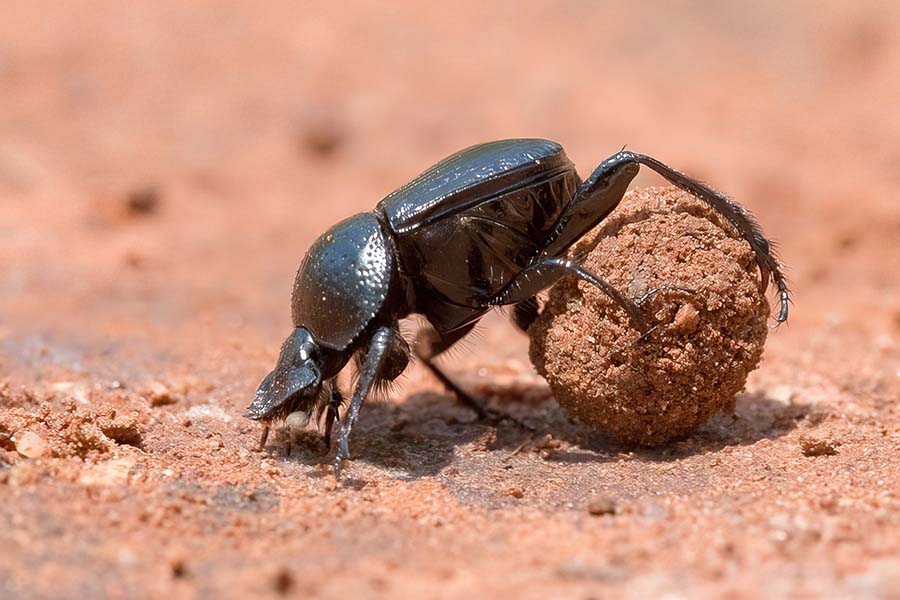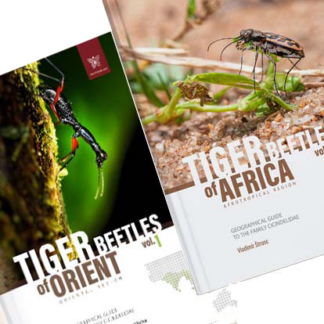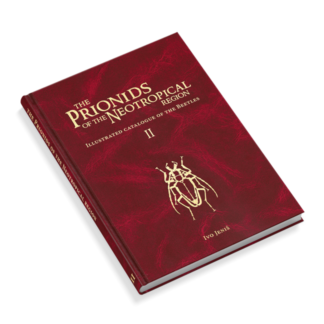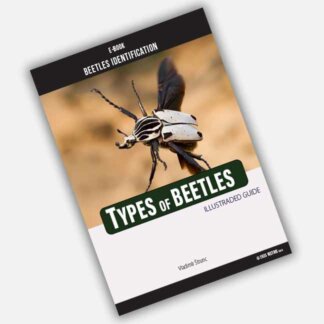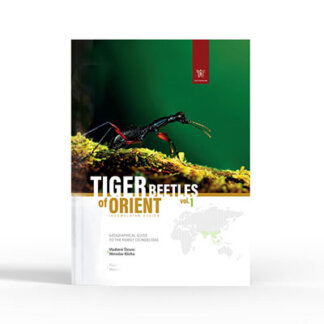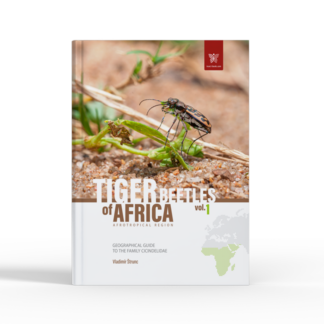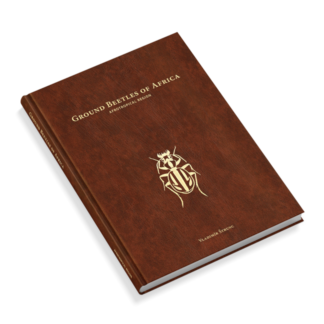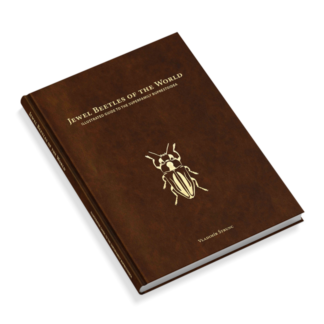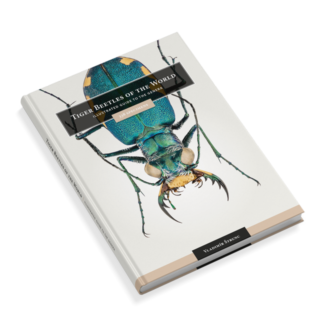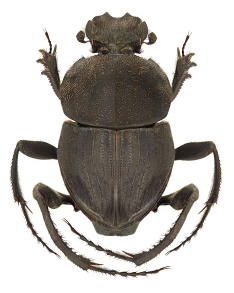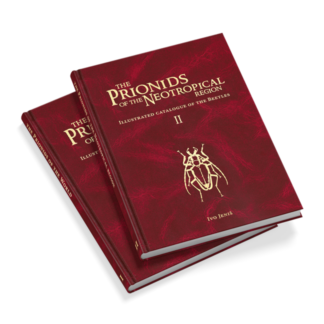Unique pictorial atlases for identifying Beetles. The Scarabaeidae are characterized by a diversity of shapes, sizes and colors. Their size can range from as small as 2 millimetres to a massive 16 centimetres in some species of rhinoceros beetles. These beetles typically have a robust body with a solid exoskeleton that serves as protection from predators. On the head, they have two pairs of antennae and a powerful mouth-piece.
Are you a student or interested in entomology? Don’t miss the exclusive discounts offered by the author! Contact today for special pricing for students and entomologists – save money and support your curiosity and studies at the same time. Contact us now to take advantage of this opportunity! You will receive a reply promptly
Book novelties:
Prioninae of the World I., Cerambycidae of the Western Paleartic I. June Bugs,
Types of beetles insects
New E-Book: Ground Beetles, Tiger Beetles, Longhorn Beetles, Jewel Beetles, Stag Beetles, Carpet Beetles, Scarab Beetles, Rhinoceros Beetles, Weevil Beetles, Blister Beetles, Leaf Beetles, Flower Beetles,
Start Shopping, Start Saving – prices from $3 USD
Scarabaeidae
Coleoptera
We recoment: carabidae, buprestidae, cerambycidae, cicindelidae, scarabaeidae, chrysomelidae, curculionoidea, staphylinidae, family coleoptera beetles, tiger beetle, ground beetle, longhorn beetle, jewel beetle, beetles of africa, goliath beetle, stag beetle lucanidae, weevil beetles, carpet beetles
Among the best-known representatives of the family Scarabaeidae are the rhinoceros beetles (subfamily Dynastinae), which are famous for their characteristic horn-like growth on the head or chest.
The Scarabaeidae are ecologically important because many species serve as decomposers of organic material. Dung beetles in particular are famous for balling up animal droppings and carrying them to their burrows. In this way they help recycle nutrients and maintain soil fertility.
Unique pictorial atlases for identifying Beetles:
(2020) Tiger Beetles of the World, Cicindelidae, Illustrated guide to the genera
(2023) Tiger Beetles of Africa, Cicindelidae, Geographical guide to the family Cicindelidae
(2024) Tiger Beetles of Orient, Cicindelidae, Geographical guide to the family Cicindelidae
(2022) Ground Beetles of Africa, Afrotropical Region
(2022) Jewel Beetles of the World, Buprestidae, Illustrated guide to the Superfamily Buprestoidea
(2008) The Prionids of the World, Prioninae, Illustrated catalogue of the Beetles
(2010) The Prionids of the Neotropical region, Prioninae, Illustrated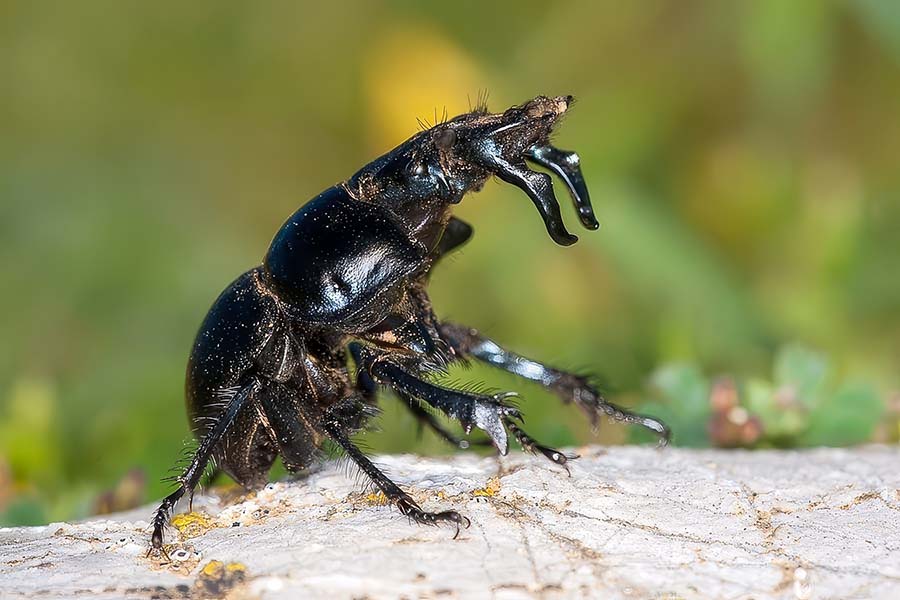 catalogue of the Beetles
catalogue of the Beetles
Scarabaeidae
Coleoptera
Some dung beetles have also become culturally important. For example, the sacred scarab beetle (Scarabaeus sacer), found in the Mediterranean region, was revered in ancient Egypt as a symbol of regeneration and resurrection.
Today, some beetle species face threats related to human activities, such as the destruction of natural habitats or the use of pesticides in agriculture. For this reason, it is important to carry out research and monitoring of these beetle populations in order to take adequate conservation measures to ensure their survival in the future.
Discover our books. The family Scarabaeidae, is a group of beetles belonging to the order Coleoptera. These beetles are distributed worldwide and are found in a variety of environments from tropical rainforests to deserts. More than 30,000 species of Scarabaeidae are known worldwide, making it one of the most numerous groups among beetles.
Scarabaeidae: The Fascinating World of Scarab Beetles
Scarabaeidae represents one of the largest and most diverse beetle families globally, comprising over 35,000 described species with immense ecological and economic significance. These beetles display remarkable diversity in form, feeding habits, and ecological roles, from the sacred dung beetles of ancient Egypt to agricultural pests like the Japanese beetle. Recent phylogenetic studies have illuminated evolutionary relationships within this group, supporting some traditional classifications while challenging others. This report examines the taxonomy, physical characteristics, ecological roles, and evolutionary relationships of scarab beetles, highlighting their importance in ecosystem functioning and their complex evolutionary history.
Taxonomy and Classification
The family Scarabaeidae belongs to the order Coleoptera (beetles) and has undergone significant taxonomic revisions over time. Currently recognized as containing over 35,000 species worldwide, several groups formerly treated as subfamilies have been elevated to family rank, including Bolboceratidae, Geotrupidae, Glaresidae, Glaphyridae, Hybosoridae, Ochodaeidae, and Pleocomidae. The family sits within the taxonomic hierarchy as part of the domain Eukaryota, kingdom Animalia, phylum Arthropoda, class Insecta, order Coleoptera, suborder Polyphaga, and infraorder Scarabaeiformia.
The current classification divides Scarabaeidae into numerous subfamilies, including Aclopinae, Aegialiinae, Allidiostomatinae, Aphodiinae, Aulonocneminae, Cetoniinae, Dynamopodinae, Dynastinae, Euchirinae, Melolonthinae, Orphninae, Pachypodinae, Phaenomeridinae, Rutelinae, Scarabaeinae, and Termitotroginae. Traditionally, scarab beetles have been divided into two major ecological groups: saprophagous (feeding on decaying organic matter) and phytophagous (plant-feeding) lineages.
Bug Posters, Insect Posters

Subfamily Organization
The saprophagous scarabs primarily comprise two major subfamily groups: Scarabaeinae and Aphodiinae. These beetles are predominantly specialized dung feeders, with the Scarabaeinae being specialist dung consumers while Aphodiinae are more generalist feeders on dead or decaying matter. The phytophagous scarabs traditionally include four main subfamilies: Melolonthinae, Cetoniinae, Dynastinae, and Rutelinae. This division reflects both feeding preferences and evolutionary relationships, though recent phylogenetic studies have revealed some complexities in these groupings.
Morphology and Physical Characteristics
Scarab beetles possess distinctive physical traits that make them easily recognizable within the insect world. They are characterized by stout bodies ranging dramatically in size from 1.5 to 160 millimeters in length. Many species display bright metallic coloration, contributing to their aesthetic appeal and cultural significance throughout history.
One of the most distinctive features of scarab beetles is their clubbed antennae composed of plates called lamellae that can be compressed into a ball or fanned out like leaves to sense odors. This antennal structure is crucial for their ability to detect food sources, mates, and suitable habitats. Many scarab species are fossorial, possessing legs adapted for digging, which facilitates their ecological roles in soil turnover and organic matter processing.
Sexual dimorphism is common within the family, with males of many species bearing prominent horns on the head and/or pronotum, which they use in competitive interactions for mates or resources. A specific example is seen in Scarabaeus gangeticus, where males have a short internal fringe on the middle tibia, while females possess a long internal fringe.
Larval Characteristics
The larvae of scarab beetles, commonly known as grubs, have a distinctive C-shaped body form and are typically pale yellow or white in coloration. These grubs predominantly live underground or under debris, protecting them from exposure to sunlight. The larval stage is often the most destructive phase for phytophagous species, as the grubs feed on plant roots and can cause significant agricultural damage.
Phylogenetic Relationships and Evolution
Recent mitochondrial phylogenomic studies have provided insights into the evolutionary relationships within Scarabaeidae. These molecular analyses generally support the monophyly of Scarabaeidae and many of its constituent subfamilies, while revealing some unexpected relationships.
The family Scarabaeidae appears to split into two major clades based on molecular evidence. One clade contains the subfamilies Scarabaeinae and Aphodiinae, with Scarabaeinae forming a sister group to Aphodiinae. The second major clade includes the subfamilies Dynastinae, Rutelinae, Cetoniinae, Melolonthinae, and Sericini. Within this second clade, Cetoniinae appears as sister to the Dynastinae + Rutelinae clade.
While most subfamilies show monophyly (descended from a common ancestor), the subfamily Melolonthinae has been revealed as non-monophyletic, suggesting that this grouping may need taxonomic revision in the future. These phylogenetic insights help clarify evolutionary pathways and may guide future classification refinements within the family.
Ecological Roles and Habits
Scarab beetles occupy diverse ecological niches and play crucial roles in ecosystem functioning across the globe. Their ecological significance stems from their varied feeding habits and behaviors, which contribute to nutrient cycling, soil aeration, and pest control.
Dung Beetles and Decomposition
The Scarabaeinae subfamily, comprising approximately 4,500 known species worldwide, represents one of the two major groups of dung-rolling beetles. These beetles are found wherever excrement or nutrient-rich substrates are available, making them nearly cosmopolitan in distribution. Dung beetles are primary utilizers of mammalian dung on Earth, playing a critical role in nutrient recycling and soil health.
Based on their dung-processing behaviors, scarabaeine tribes can be categorized as either “rollers” or “tunnelers”. Roller species form dung into balls and roll them away from the source before burying them, while tunnelers create burrows directly beneath dung pats. This behavioral diversity increases the efficiency of dung processing in ecosystems.
Feeding Specializations
While many scarabs are specialized dung feeders, others have evolved different feeding preferences. Some species are scavengers that recycle carrion or decaying plant material. Others, particularly in the phytophagous lineages, feed directly on living plant tissues and can become significant agricultural pests. A smaller proportion of species have even evolved carnivorous feeding habits.
Most adult scarab beetles are nocturnal, though flower chafers (Cetoniinae) and many leaf chafers (Rutelinae) are active during daylight hours. This temporal partitioning allows different scarab species to exploit similar resources at different times, reducing direct competition.
Distribution and Diversity Patterns
Scarabaeidae exhibits a worldwide distribution, though diversity patterns vary significantly across regions. The greatest diversity of scarab beetles is concentrated in tropical regions, with single sites in the tropics potentially hosting nearly 100 species, compared to the most species-rich sites in temperate regions like New York State having close to 10 species.
North America is home to approximately 75 species of Scarabaeinae, representing a relatively small fraction of the global diversity of this subfamily. The North American scarabaeine fauna is traditionally classified into five tribes: Canthonini, Dichotomiini, Coprini, Phanaeini, and Onthophagini.
A specific example of a widely distributed scarab is Scarabaeus gangeticus, a dung beetle found across many Indo-African countries including India, Sri Lanka, Pakistan, Iran, Saudi Arabia, Egypt, Botswana, Ethiopia, Somalia, Uganda, and Zimbabwe. This broad distribution demonstrates the adaptation and dispersal capabilities of successful scarab lineages.
Economic and Cultural Significance
Scarab beetles have played important roles in human history, both as agricultural pests and as cultural symbols. Their economic impact is substantial, with some species causing significant damage to crops while others provide valuable ecosystem services.
Agricultural Impact
Many phytophagous scarab beetles are economically damaging agricultural pests. For example, the Japanese beetle (Popillia japonica) has become broadly invasive and causes millions of dollars of damage worldwide by feeding on a wide range of plant species. The grubs of many scarab species feed on plant roots, damaging crops and ornamental plants in agricultural and horticultural settings.
Cultural Symbolism
Scarab beetles, particularly dung beetles of the genus Scarabaeus, held significant cultural importance in ancient Egypt, where they were revered as sacred symbols. The beetles’ habit of rolling dung balls was associated with the movement of the sun across the sky, and scarab amulets were used as powerful symbols of rebirth and regeneration.
Ecosystem Services
Despite the pest status of some species, many scarab beetles provide valuable ecosystem services. Dung beetles, together with other saprophagous relatives, are ecologically important as degraders and redistributors of nutrients. By burying and processing dung and other organic materials, they improve soil fertility, reduce parasite transmission, and contribute to healthy ecosystem functioning.
Conclusion Scarabaeidae
The family Scarabaeidae represents one of the most diverse and ecologically important groups of beetles globally. From tiny detritivores to impressive horned giants, scarab beetles have evolved diverse morphologies, behaviors, and ecological roles over their evolutionary history. Recent phylogenetic studies have helped clarify relationships within this complex group, supporting some traditional classifications while challenging others.
The ecological services provided by scarab beetles, particularly in nutrient cycling and decomposition, make them valuable components of healthy ecosystems worldwide. Simultaneously, the pest status of certain phytophagous species highlights the complex relationship between humans and these beetles. As climate change and habitat loss continue to threaten biodiversity globally, understanding and conserving scarab beetle diversity becomes increasingly important for maintaining ecosystem functions and services.
Future research directions should focus on clarifying remaining taxonomic uncertainties, particularly regarding non-monophyletic groups like Melolonthinae, and on understanding how scarab beetles will respond to changing environmental conditions. Conservation efforts should recognize the ecological importance of these beetles and work to maintain the habitats and conditions necessary for their continued diversity.
